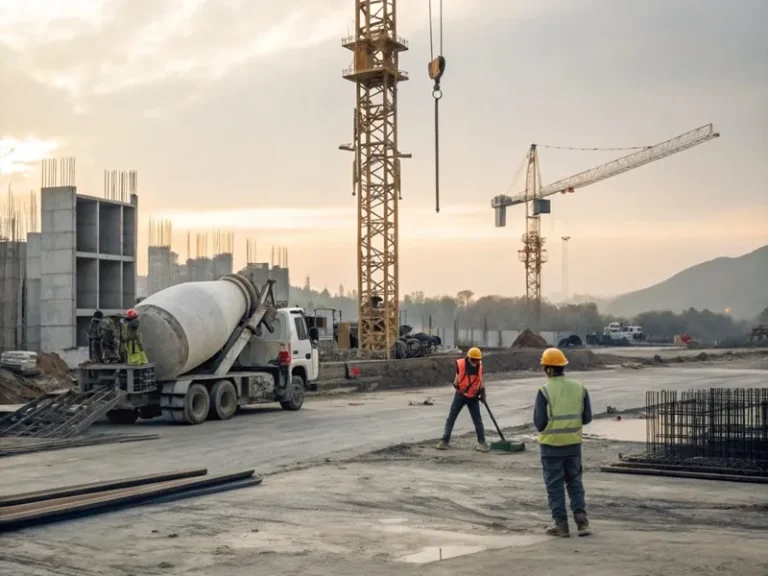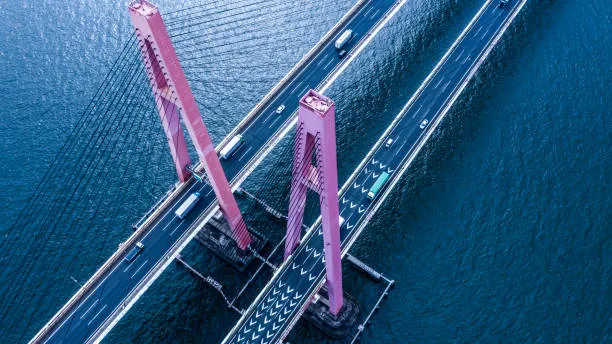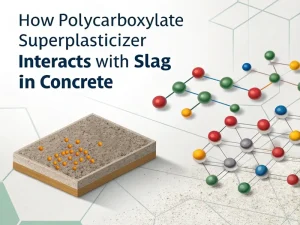Blog

Concrete is the cornerstone of modern architecture, and water reducing admixtures are crucial in improving its performance. Whether it is a small DIY project or a large-scale infrastructure development, choosing the appropriate water reducing admixtures is essential for achieving the expected performance in concrete.
We have listed the following factors to help you select the proper water reducing admixtures:
Different types of engineering have different requirements for the performance of concrete, which is the primary consideration when choosing the kind of water reducer.

In high-rise building engineering, there are high requirements for the pumpability and slump retention ability of concrete due to the need to transport concrete to higher floors through pumping equipment.
Polycarboxylate Superplasticizer, due to their excellent slump retention and high water reduction rate, can maintain good workability of concrete during long-distance pumping, ensuring that concrete reaches the specified height smoothly while providing high strength and durability of concrete, meeting the safety requirements of high-rise building structures.
In large-span bridge engineering, concrete structures must withstand enormous loads and long-term stresses, which impose strict requirements on concrete strength, crack resistance, and durability.
Polycarboxylate Superplasticizer or melamine-based water reducers can be used in such projects to improve concrete strength effectively, optimize the internal microstructure of concrete, enhance concrete crack resistance, and enable it to resist long-term vehicle loads and natural environmental erosion, thereby extending the service life of bridges.


For large-volume concrete projects, such as dam construction in large-scale water conservancy hubs, a large amount of hydration heat will be generated inside the concrete, easily leading to temperature cracks. Therefore, it is necessary to choose water reducers with retarding effects and good slump retention performance, such as aminosulfonate water reducers or lignin water reducers, to control the hydration heat temperature rise of concrete, prolong the setting time of concrete, reduce the occurrence of temperature cracks, and ensure the workability of concrete during construction.
In road engineering, concrete pavement needs to have good wear resistance, skid resistance, and flexural strength. Naphthalene-based water reducers or aliphatic water reducers can improve the early strength of concrete, enabling roads to be opened to traffic as soon as possible while meeting the basic performance requirements of the pavement. For some streets with special requirements, such as airport runways, high-performance polycarboxylate superplasticizers may be needed further to improve concrete’s impact resistance and durability.

The construction environment conditions also significantly impact the selection of water reducing admixtures.
During construction in high-temperature environments, the moisture in the concrete evaporates rapidly, which can easily lead to an increase in slump loss. At this time, water-reducing agents with good slump retention and high-temperature resistance should be selected, such as polycarboxylate superplasticizers or amino sulfonate superplasticizers, which can effectively maintain the slump of concrete under high-temperature conditions and ensure smooth construction.
In low-temperature environments, the setting time of concrete will be prolonged, and the strength development will be slow. Therefore, it is necessary to choose water reducing admixtures with specific early-strength effects or to use them with additives such as early-strength agents. For example, melamine based water reducing agents can promote the early hydration reaction of cement, accelerate the development of early strength of concrete, and are suitable for concrete construction in low-temperature environments. At the same time, the stability of water reducing admixtures at low temperatures should be considered to avoid crystallization or precipitation due to low temperatures, which may affect their effectiveness.
In high-humidity environments, concrete is prone to surface bleeding, which affects the appearance quality and durability. Water reducing admixtureswith good water retention properties, such as polycarboxylate superplasticizers, should be selected. They can reduce the bleeding of concrete and improve its uniformity and impermeability.
In addition, concrete faces problems such as seawater erosion and chemical corrosion in some special environments such as seaside or chemical areas. It is necessary to choose water reducers with anti-corrosion properties, such as polycarboxylate water reducers containing special functional groups or other types of modified water reducers, to improve the corrosion resistance of concrete.
The characteristics of concrete raw materials, especially the type, mineral composition, and fineness of cement, significantly impact the adaptability of water-reducing agents.
Cement from different brands or sources may have differences in mineral composition and properties and varying adsorption and dispersion effects on water-reducing agents.
For example, some cement contains a high content of C3A, which may increase the adsorption capacity of the water-reducing agent, thereby affecting its dispersibility. In this case, it is necessary to choose a water reducer with good adaptability to cement or to determine the appropriate amount and formulation plan of water reducer through experiments.
The properties of aggregates, such as type, particle size, gradation, and mud content, also affect the effectiveness of water-reducing agents. Aggregates with high mud content may adsorb water-reducing agent molecules, reducing the adequate amount of water-reducing agent and thereby affecting the workability and strength of concrete.
For aggregates with high mud content, it may be necessary to choose water-reducing agents with good mud resistance or take measures to reduce the mud content of the aggregates. In addition, the particle size and grading of aggregates can affect the porosity and flowability of concrete, thereby affecting the dosage and performance requirements of water-reducing agents.
Economic cost is an important factor that cannot be ignored in engineering construction. The prices of different types of water reducing agents vary greatly, and it is necessary to comprehensively consider the cost of water reducing agents while meeting engineering performance requirements.
Lignin based water reducers and aliphatic water reducers have relatively low prices and are suitable for cost sensitive projects that do not require particularly high concrete performance, such as foundations and non load bearing structures of ordinary residential buildings.
Naphthalene based water reducing agents are moderately priced and widely used in some traditional concrete projects. However, in high-performance projects, they may need to be mixed with other high-efficiency water reducing agents to balance performance and cost.
Although polycarboxylate superplasticizer has excellent performance, its price is relatively high. In some large-scale key projects or projects with extremely high requirements for concrete performance, such as super high-rise buildings, large bridges, etc., the long-term benefits brought by their high performance (such as reducing maintenance costs, extending structural service life, etc.) may exceed their initial costs, so they are widely used.
In practical engineering, it is necessary to choose the appropriate type of water reducer based on the project budget and concrete performance requirements. By optimizing the mix design and water-reducing agent dosage, the optimal balance between performance and cost can be achieved.
With the increasing awareness of environmental protection, the construction industry has higher environmental requirements for water-reducing agents. When choosing water reducing admixtures, priority should be given to products that meet environmental standards, have no pollution during production, and are harmless to the environment and human health.
Polycarboxylate superplasticizer don’t use harmful substances such as formaldehyde in the production process and are green and environmentally friendly additives that conform to the concept of sustainable development. They are widely used in projects with high environmental requirements.
In addition, the research and development of some new water-reducing agents focuses on using renewable resources or industrial waste as raw materials, such as biomass raw materials, slag, etc., to prepare water-reducing agents. This not only reduces dependence on traditional chemical raw materials and lowers resource consumption but also realizes the resource utilization of waste, which is beneficial for environmental protection and sustainable development. In engineering construction, choosing environmentally friendly water-reducing agents can help reduce the negative impact of construction activities on the environment and promote the development of the construction industry in a green and low-carbon direction.
From this perspective, when choosing the type of water-reducing agent, various factors need to be comprehensively considered. Only by conducting comprehensive evaluation and reasonable selection based on specific engineering conditions can the role of water reducing agents be fully utilized to ensure the quality, performance, economy, and sustainability of concrete engineering.
At the same time, after selecting the type of water reducing admixtures, we need to choose a supplier of water reducer products with reliable quality and stable performance. This can ensure consistent performance of concrete produced from different batches. It is recommended to choose manufacturers of water-reducing agents with a good reputation, mature production technology, and strict quality control. Their products should comply with relevant national and industry standards.
Meanwhile, a stable supply channel can ensure a timely supply of water reducing admixtures, avoiding the impact of raw material shortages on construction projects. In some large-scale engineering projects, a large amount of water-reducing agents are required, and if the supply is unstable, it may lead to project delays. Therefore, when selecting water-reducing agents, it is necessary to consider factors such as the manufacturer’s production capacity, supply capacity, and logistics distribution to ensure a stable supply of water reducing admixtures.
As a supplier of polycarboxylate superplasticizers, we have stable production capacity and over 20 years of export experience, providing you with high-quality services!

How Polycarboxylate Polyether Monomer Affect Concrete Performance
Blog How Polycarboxylate

How Polycarboxylate Superplasticizer Interacts With Slag In Concrete
Blog How Polycarboxylate